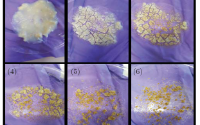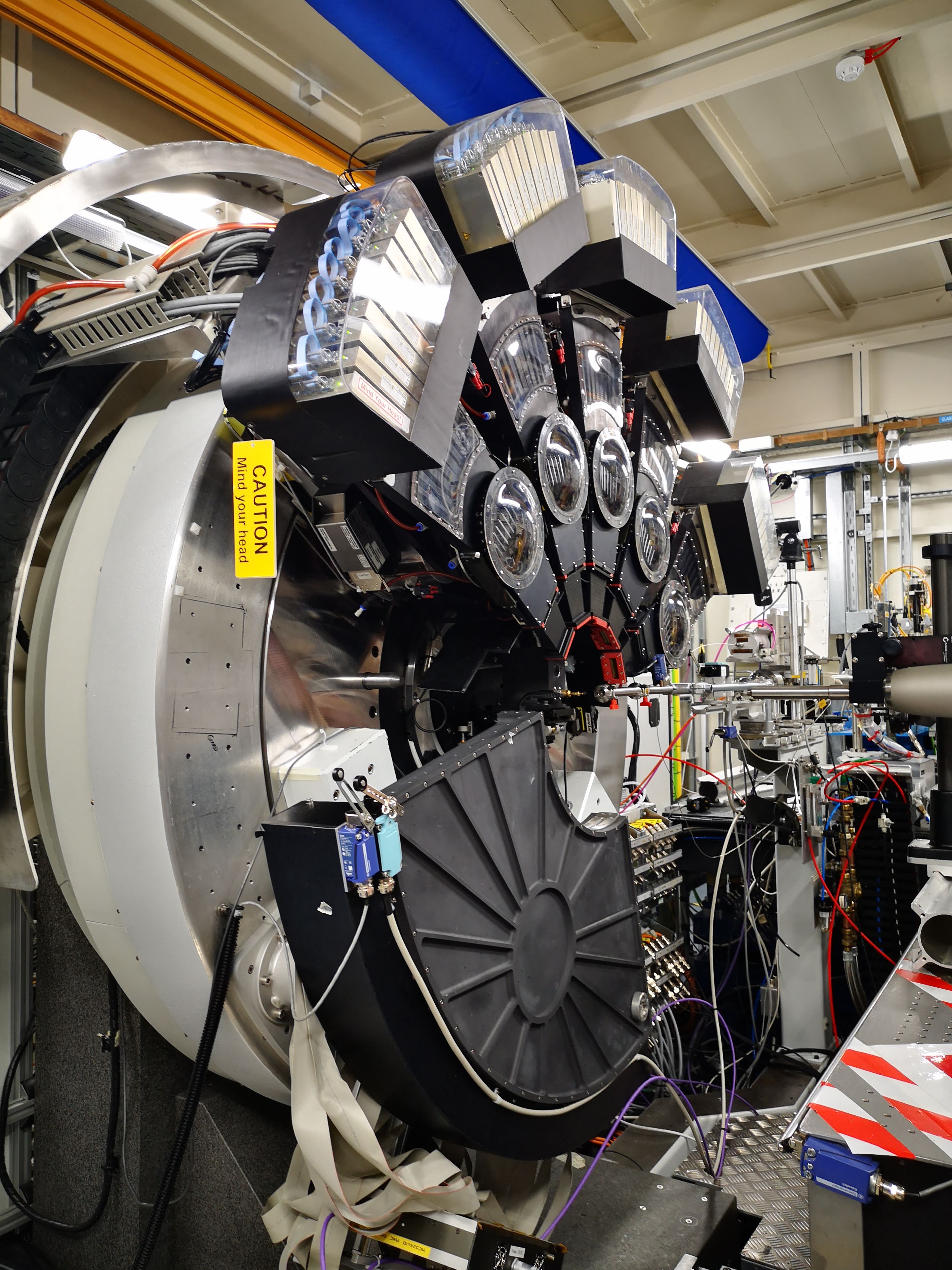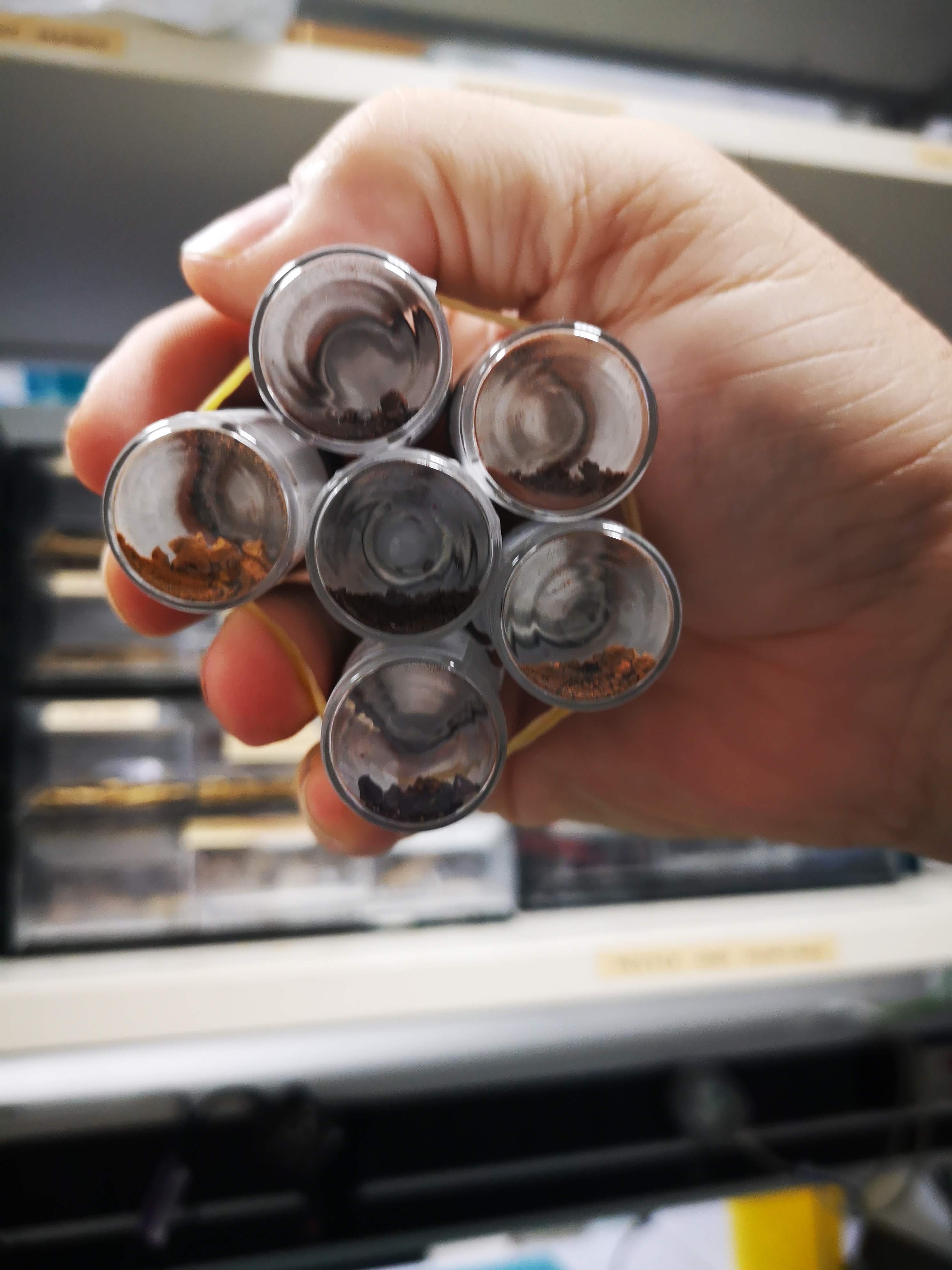Find out more about our ambitious upgrade project, delivering more brightness, more coherence, and greater speed of analysis to UK science. More about Diamond-II
![]()
Find out more about Diamond's response to virus research.
![]()

Learn more about the science of space dust in our Science Highlight on this ...Read On Read more in our Highlight

Dust is the first solid matter formed, and investigating cosmic dust is a very active field within astrophysics. There are a few examples that have arrived on Earth as interplanetary dust particles, comet dust and in meteorites their complicated history means they may not be representative. The primary methods of investigating the properties of cosmic dust, therefore, are astronomical observations and laboratory experiments on analogue materials.
Dr Thompson adds;
We cannot replicate the formation conditions of cosmic dust here on Earth exactly, and no single method of producing analogue dust samples in the laboratory can simulate all of the dust we observe around stars and in the interstellar medium. However, by creating and characterising these samples, and comparing them to astronomical data to see where they are similar, and where they differ, we increase our understanding of the formation, composition and evolution of their cosmic counterparts.

Each sample gets us one step closer to understanding more about cosmic dust and how planetary systems form. Who would have guessed a kitchen microwave could help with that!
Although we see evidence of iron in stars and planets, we don't see it in the interstellar medium. This is the 'missing iron' problem, and one possible explanation is that the iron exits as nanoparticles. Another is that iron is 'locked away' in silicate minerals, in quantities too low (less than 10%) to greatly affect the spectral properties of what otherwise appears as pure magnesium silicate dust.
The research team microwave-dried gels with and without iron, and compared them to samples produced from the same gel but dried using conventional in-air oven and vacuum furnace. To confirm the new samples did indeed contain iron in their structure they used X-ray powder diffraction and total X-ray scattering on beamline I11, along with mid-IR FTIR spectroscopy and small-angle X-ray scattering on I22. They then used I11 to observe how their structure evolved at high temperatures, to mimic the conditions experienced by dust grains in protoplanetary disks
1 Thompson SP et al. Amorphous Mg–Fe silicates from microwave-dried sol-gels: Multi-scale structure, mid-IR spectroscopy and thermal crystallisation. Astronomy & Astrophysics 624, A136 (2019). DOI:10.1051/0004-6361/201834691.
2 Thompson et al J Non-crystalline Solids 447, 255 (2016) DOI: 10.1016/j.jnoncrysol.2016.06.017
Diamond Light Source is the UK's national synchrotron science facility, located at the Harwell Science and Innovation Campus in Oxfordshire.
Copyright © 2022 Diamond Light Source
Diamond Light Source Ltd
Diamond House
Harwell Science & Innovation Campus
Didcot
Oxfordshire
OX11 0DE
Diamond Light Source® and the Diamond logo are registered trademarks of Diamond Light Source Ltd
Registered in England and Wales at Diamond House, Harwell Science and Innovation Campus, Didcot, Oxfordshire, OX11 0DE, United Kingdom. Company number: 4375679. VAT number: 287 461 957. Economic Operators Registration and Identification (EORI) number: GB287461957003.